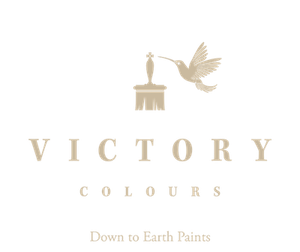How much paint do I need? Calculating paint quantity for a room
Posted by Victoria Yardley on

When it comes to DIY, painting is one of the most useful tasks you can learn to do properly. After deciding which colour and brand of paint you want to buy, you might find yourself wondering ‘how much paint do I need’?
Here at Victory Colours we are experts when it comes to all things paint, including calculating paint quantity for a room. We have put this guide together to help you work out exactly how much paint you should buy when painting a room so you don’t end up with too much, or worse, not enough.
Things to consider when working out how much paint do I need?
Before calculating the volume of paint required for a room you will need to consider the porosity of the substrate. For instance new plaster will need either a mist coat first (watered down emulsion by 25-30%, or a Primer/Sealer), if you do not prepare the walls properly first the new paint will most likely peel off at a later date, or crack.
Victory Colours paint has great coverage and is highly pigmented so you could get away with one coat for most colours, however, we always recommend 2 coats for the best finish, unless of course you are painting the walls the same colour. Victory Colours paint has great opacity so a 2.5 litre tin will be approximately 35 square metres, and a 5 litre tin will give you 70 square metres.
How much paint do I need: Calculations
Calculating the paint quantity is simple maths, don’t forget to factor in your ceilings and any extras for any remedial work later on.
Walls
When measuring a room you need to factor in the height of the room too. Measure the lengths of all the walls. If the room is 4m x 4m and the height is 2.5m the calculation would be 4m x 4 = 16m. Then multiply this by the height, so 16m x 2.5m = 40 square metres. Two coats will be required therefore you will need paint to cover 80 square metres. Don’t forget to factor in any windows, doors, fitted cupboards etc in the room which need to be subtracted from your calculations and will reduce the amount of paint required. One of our 5 litre tins of emulsion should be enough for a room of this size, unless you are painting the ceiling in the same colour, you will then need a 2.5l tin too.
Ceilings
Measure the length and width of the floor space of the room and then multiply the two numbers. For instance a room which measures 4m x 4m is 16 square metres and you will need two coats of paint, so 16m x 2 = 32 square metres, which is one 2.5l tin with a bit left over.
Top Tips
When using more than one tin of paint we recommend mixing them together first to ensure colour consistency.
Always decant the paint into a tray or kettle to avoid spoilage for any left over paint, unless you intend to use it all at one time.
With leftover paint, always wipe the rim of the paint tin, and the edges of the lid, clean before putting the lid back on, this means that any paint around the edges won’t end up drying and falling into the paint when you use it again.
Also always store paint in an ambient temperature, our paints are all water-based and subject to the vagaries of extreme temperatures, especially frost.
Priming and Sealing
We always recommend priming freshly plastered walls, but if there is good quality emulsion already on the walls you should be fine to paint directly over it.
Please note to NEVER use contract matt as a base coat. In the words of our Technical Director, it is the devil’s work and is extremely porous. Adding a chalky porous base to an already very porous substrate is a recipe for disaster. Check your walls before you paint, if you wipe your fingers on a wall and find a light dust of powder then you will need to prime first.
Types of Paint
- Emulsion - this is your regular wall and ceiling paint and will go the furthest.
- Kitchen/Bathroom Paint - this is also wall and ceiling paint but has extra water resistant properties, it will also be more durable so is great for high traffic areas too. It will have a soft sheen to it though, so it depends on the finish you are trying to create.
- Wood/Metal Eggshell - These are for your wood trim, doors, skirting boards, radiators and furniture. We recommend that you fully prepare any surfaces first, sand, clean and then prime before painting with the eggshell, we recommend two coats of Eggshell for the best finish.
- Primer/Sealer - This is to prepare walls and ceiling for emulsions
- Primer/Undercoat - This is to prepare wood and metal surface before adding the Wood/Metal Eggshell.
